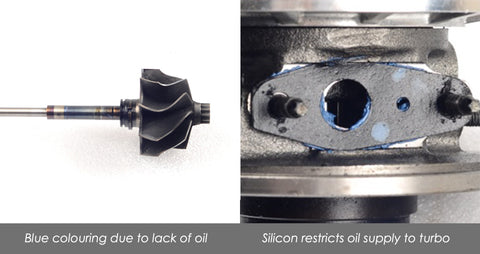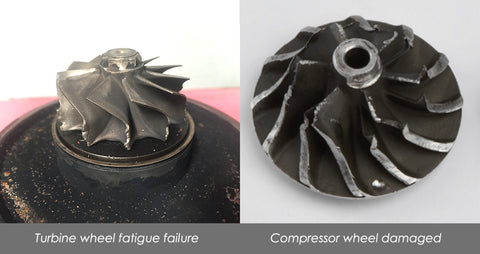The causes for turbo failure usually fall into the following five categories:
1. Foreign Object
Since turbo can spin at more than 360,000 rpm, even small object ingested or sucked into the turbo can damage or destroy the compressor and turbine, leading to imbalance and turbo failure.

2. Oil Starvation
The turbine shaft and bearings rotate in a thin film of oil when turbo is operating at high rpm. If oil is not present at start-up and while the turbo is running, the bearings will fail.
Turbo shaft / bearing will be damaged by mental friction and high temperature due to oil inlet supply restrictions, incorrect gasket placement and use of liquid gaskets or poor quality lubricants.

3. Oil contamination
The turbine shaft and bearings rotate in a thin film of oil when turbo is operating at high rpm. Consequently any fault with the oil supply to the turbo means its bearings are likely to fail before the engine’s main bearings.
The turbo bearing system will be damaged by contaminated oil, which is caused by extended service intervals, unclean oil feed pipe or poor maintenance.

4.Over Speeding
Each turbo is designed and manufactured to rotate at the correct speed for its application. Overspeeding is when the turbo rotates at a greater speed than its operational limits, which cause the turbo to fail by damaging the turbine and compressor wheel and bearings.
A restriction in the air intake pipe work, Worn injectors or engine malfunction can cause turbo overspeeding, making orange peel effect on backface of compressor wheel or chipped turbine wheel.

5. Actuator Malfunction
Movement of the VNT (Variable Nozzle Turbine) or wastage is controlled by vacuum actuator or electronic actuator. Malfunction of turbo actuator makes turbo operated under high boost or low boost. This means the actuator / turbo needs to be replaced.
